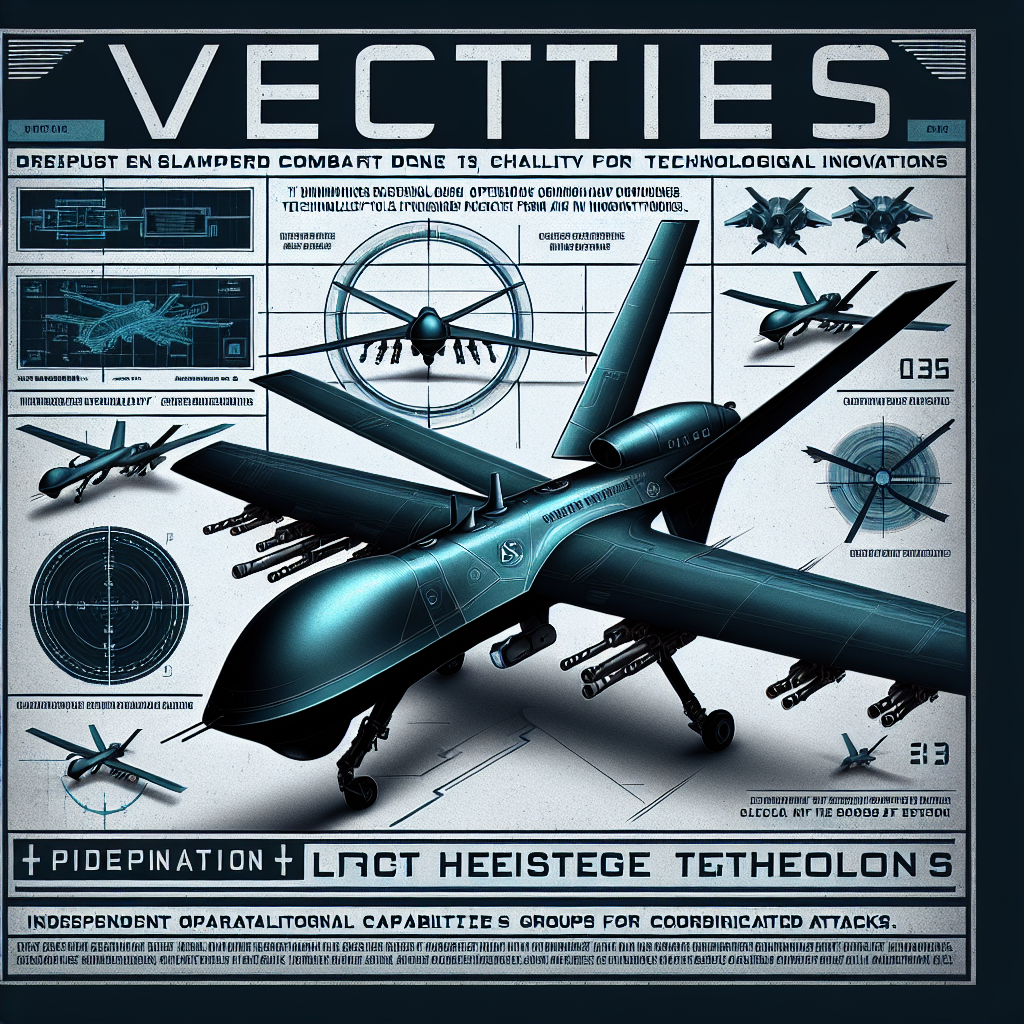Lockheed Martin, the world’s largest arms dealer, has unveiled a stealth combat drone project named Vectis from its Skunk Works facility. The aim is to ensure that the United States maintains air superiority at all times.
This drone, Vectis, is designed to operate independently or in coordination with Lockheed’s F-35 Lightning fighter jets. The company stated that Vectis is capable of executing precise strikes, intelligence, surveillance, reconnaissance (ISR) targeting, electronic warfare, and offensive and defensive missions. The department leading the development of this combat drone is pioneering a new approach to rapidly develop seamless collaboration and competitively priced advanced technology.
According to Lockheed Martin, Vectis is a Group 5 high-survivability and high-lethality collaborative combat aircraft (CCA), intended to enhance the unmatched aerial advantage of the United States and its allied forces.
The specifics of this drone are not yet available, but from the official renderings, Vectis features improved delta wings, a fuselage with aerodynamic flow plates at the nose, and engine exhausts located on the top of the aircraft body, emphasizing stealth capabilities. While the speed and range have not been disclosed, Vectis is designed to operate in conjunction with the F-35 for missions across the Indo-Pacific, European, and Middle Eastern theaters, indicating it is not a short-range model.
“Vectis represents the pinnacle of our expertise in complex system integration, advanced fighter jet development, and autonomy,” said OJ Sanchez, Vice President and General Manager of Lockheed Martin’s Skunk Works facility. “We are not just constructing a new platform – we are building a new paradigm of aerial power based on a powerful, customizable, and cost-effective agile drone framework.”
Lockheed Martin stated that the development of the drone is already underway. Simultaneously, the Skunk Works facility is investing necessary resources and personnel to develop and test robust systems, ensuring compliance with the US military’s new Joint Services plan and the needs of global allies. The goal is to manufacture and conduct test flights of this new type of drone within two years.
The drone’s design supports various roles, including electronic warfare, precise strikes, offensive and defensive missions, and intelligence collection to assist decision-makers in making more accurate target decisions.
The Skunk Works facility, named after a humorous reference from the “L’il Abner” comic strip, is known for its secrecy and regularly unveils a variety of top-secret military aircraft. Security measures are extremely tight, and interviews with its senior members often feel like a journey through time and space. The official name of the Skunk Works facility is Lockheed Martin Advanced Development Programs (ADP), which has birthed many legendary aircraft models like the P-80 Shooting Star, F-104 Starfighter, U-2 Dragon Lady, A-12 Oxcart, SR-71 Blackbird, F-117 Nighthawk, and X-59 QueSST, boasting extensive experience in experimental aircraft development.
Lockheed Martin anticipates Vectis to be operational and flying by 2028.
In June, President Trump signed an executive order prioritizing the accelerated integration of unmanned aircraft systems (UAS) into US airspace. The Trump administration emphasized the importance of drones, stating that they can increase US productivity, create high-skilled job opportunities, and reshape the future of the aviation industry.
The executive order stated, “Building a robust and safe domestic unmanned aircraft industry is crucial for reducing reliance on foreign resources, strengthening critical supply chains, and ensuring that the American people benefit from this technology. Now is the time to expedite drone testing, achieve routine operations, expand domestic production scale, and increase the export of trusted American-made drone technology to the global market.”
The US government noted that drones have already started transforming various industries from logistics and infrastructure inspections to precision agriculture, emergency response, and public safety. The executive order also mentioned that emerging technologies like electric vertical take-off and landing (eVTOL) aircraft would modernize cargo transport, passenger transportation, and other advanced aerial mobility capabilities.
Shortly after the release of the executive order, Secretary of Defense Hagsees issued a directive to ensure that the United States becomes a leader in the field of drones. In July, he informed senior Pentagon leadership that he would revoke restrictive policies hindering production and limiting access to these crucial technologies, unleashing the collective potential of American manufacturing and combat personnel intelligence. He also stated in the directive that he would decentralize the purchasing and operation of drones from bureaucratic agencies to US combat personnel.
“Drones are the biggest innovation on the battlefield for this generation, causing most of the casualties in the Ukraine conflict this year. Our adversaries are producing millions of cheap drones annually,” said Hagsees. “Despite a significant global surge in military drone production over the past three years, the previous administration set up cumbersome regulations. US forces do not have the lethal small drones necessary for modern warfare.”
(This article draws references from a report by Fox News on September 26th.)

